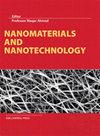Removal of methylene blue from wastewater using hydrogel nanocomposites: A review
IF 3.3
3区 材料科学
Q2 MATERIALS SCIENCE, MULTIDISCIPLINARY
引用次数: 19
Abstract
Water pollution by organic dyes continues to pose a serious health and environmental threat to the ecosystem. Although adsorption using biopolymer-based hydrogels has proven to be an ideal technique for the treatment of these dye contaminants from aqueous solutions, these hydrogels suffer from lack of mechanical stability and recovery as compared to synthetic polymers. Herein, we review the low-cost synthesis of hydrogel incorporated with inorganic components mainly focusing on strategies to improve the mechanical stability and separation of the hydrogel in removing methylene blue (MB) dye from aqueous solution. The literature shows that hydrogel nanocomposites are a class of materials that have flourished significant consideration, especially concerning water treatment. In adsorption technology, hydrogel nanocomposites act as absorbents, prominent to enhance their removal efficiency towards contaminants. This review highlights the preparation and use of hydrogel nanocomposites as efficient adsorbents. In-depth discussions on adsorption and diverse synthetic routes of hydrogels have been devoted to applications of these nanocomposites and are compared in this contribution to the removal efficiency of MB dye from wastewater.水凝胶纳米复合材料去除废水中亚甲基蓝的研究进展
有机染料造成的水污染继续对生态系统的健康和环境构成严重威胁。尽管使用基于生物聚合物的水凝胶的吸附已被证明是从水溶液中处理这些染料污染物的理想技术,但与合成聚合物相比,这些水凝胶缺乏机械稳定性和回收率。在此,我们综述了掺入无机成分的水凝胶的低成本合成,主要集中在提高水凝胶从水溶液中去除亚甲基蓝(MB)染料的机械稳定性和分离性的策略上。文献表明,水凝胶纳米复合材料是一类备受关注的材料,尤其是在水处理方面。在吸附技术中,水凝胶纳米复合材料作为吸收剂,显著提高了其对污染物的去除效率。本文综述了水凝胶纳米复合材料作为高效吸附剂的制备和应用。深入讨论了水凝胶的吸附和不同的合成路线,并对这些纳米复合材料的应用进行了比较,以提高废水中MB染料的去除效率。
本文章由计算机程序翻译,如有差异,请以英文原文为准。
求助全文
约1分钟内获得全文
求助全文
来源期刊

Nanomaterials and Nanotechnology
NANOSCIENCE & NANOTECHNOLOGY-MATERIALS SCIENCE, MULTIDISCIPLINARY
CiteScore
7.20
自引率
21.60%
发文量
13
审稿时长
15 weeks
期刊介绍:
Nanomaterials and Nanotechnology is a JCR ranked, peer-reviewed open access journal addressed to a cross-disciplinary readership including scientists, researchers and professionals in both academia and industry with an interest in nanoscience and nanotechnology. The scope comprises (but is not limited to) the fundamental aspects and applications of nanoscience and nanotechnology
 求助内容:
求助内容: 应助结果提醒方式:
应助结果提醒方式:


